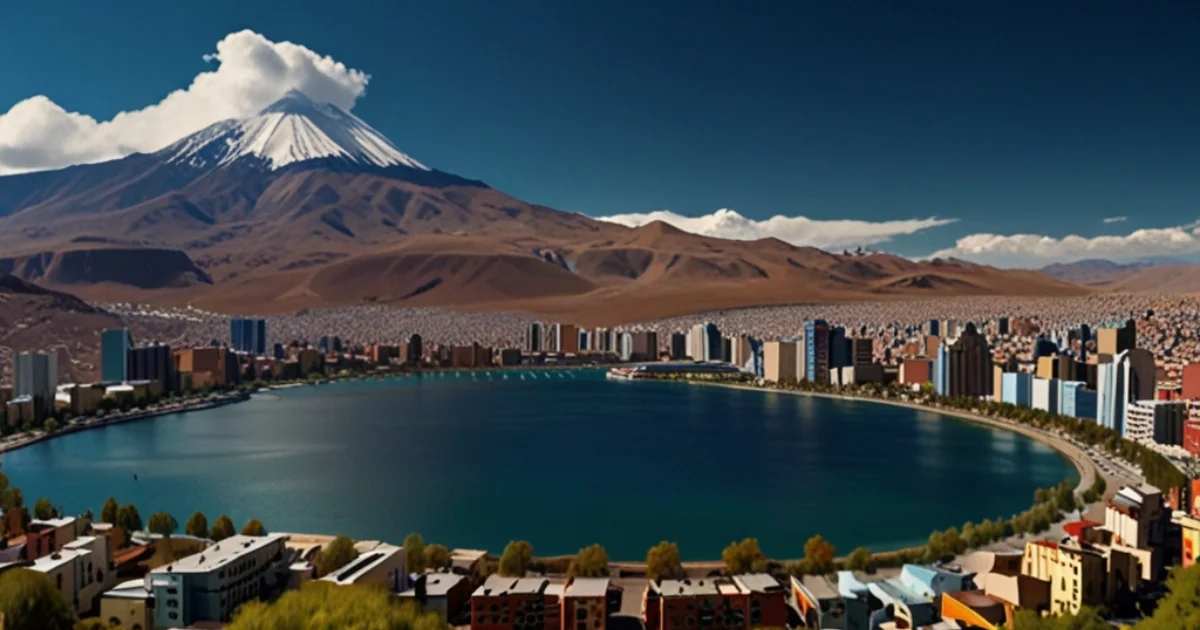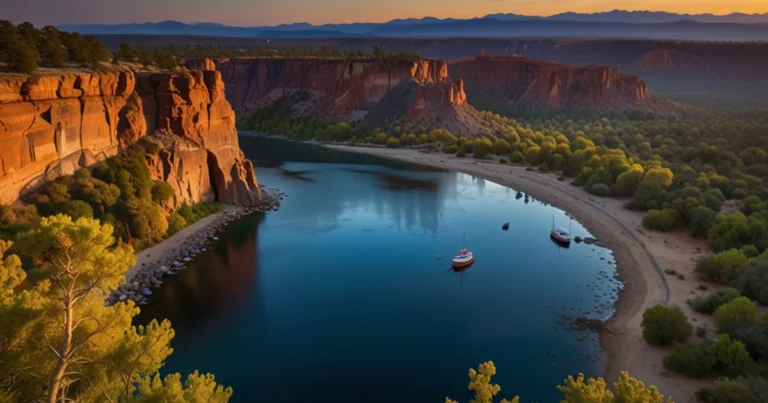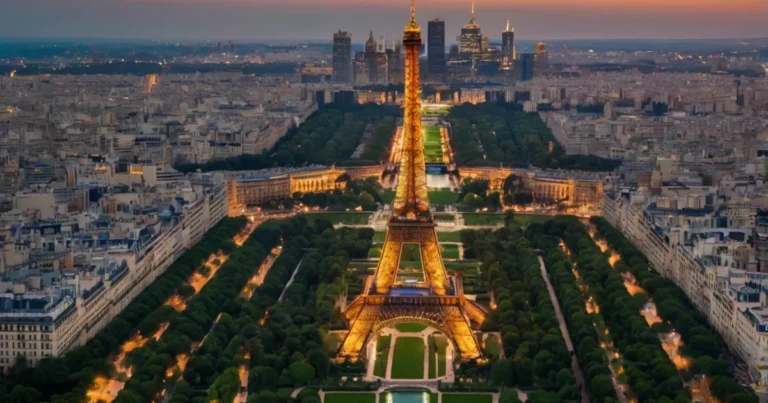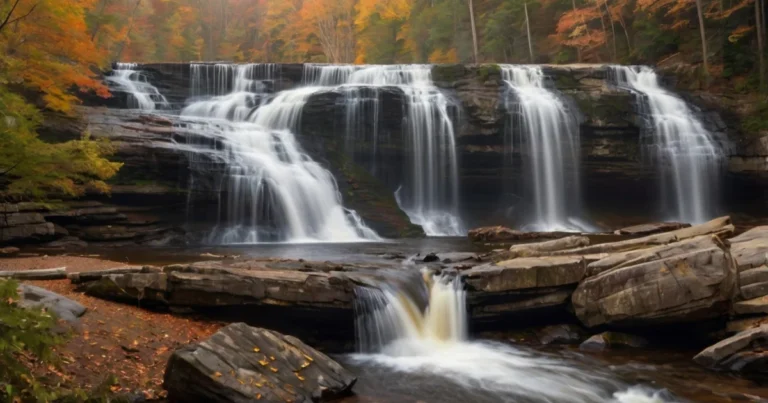Unveiling the Magic of La Paz: A Beginner’s Guide to Exploring Bolivia’s Highest Capital
La Paz, Bolivia, perched high in the Andes Mountains, is a city unlike any other. Nicknamed “The City in the Clouds,” La Paz offers a unique blend of indigenous culture, colonial architecture, and breathtaking natural beauty. Whether you’re a thrill-seeker, a history buff, or simply a curious traveler, La Paz has something for everyone. This beginner’s guide will equip you with all the information you need to plan an unforgettable adventure in La Paz.

1. Acclimatization: Taking Care of Business at High Altitudes
Before diving into the city’s vibrant energy, prioritizing acclimatization is crucial, especially if you’re coming from sea level. La Paz sits at a staggering 3,640 meters (11,975 ft) above sea level. Symptoms of altitude sickness like headaches, dizziness, and fatigue are common. Here’s how to ease into the altitude:
- Pace Yourself: Avoid strenuous activity upon arrival.
- Hydration is Key: Drink plenty of water and coca leaf tea, a traditional remedy for altitude sickness.
- Light Meals: Opt for easily digestible meals to avoid putting extra strain on your digestive system.
2. A Ride Above the Clouds: Soaring on the La Paz Teleférico
One of the most iconic experiences in La Paz is a ride on the world’s highest urban cable car system, the Teleférico. This innovative public transportation network offers stunning panoramic views of the city sprawled across the canyon. Take a thrilling ride across the various lines, each offering unique perspectives of La Paz’s diverse neighborhoods.
3. A Journey Through Time: Unveiling the Treasures of Plaza Murillo
Plaza Murillo, the heart of La Paz, pulsates with history and cultural significance. Here, you’ll find the imposing Presidential Palace adorned with its presidential guard in their distinctive red uniforms. Admire the grandeur of the 18th-century La Paz Cathedral and wander through the historic Government Palace.
4. Delving into the Depths: A Spooky Yet Fascinating Visit to the Cementerio General
La Paz’s Cementerio General (General Cemetery) is an unconventional yet captivating attraction. Unlike traditional cemeteries, above-ground mausoleums, often elaborately decorated, line the hillside. These structures reflect the deceased’s social status and are a unique testament to La Paz’s funerary traditions. Guided tours are available for a deeper understanding of this fascinating cemetery.
5. A Feast for the Senses: Exploring the Bustling Witches’ Market
The Witches Market (Mercado de las Brujas) is a must-visit for those seeking a glimpse into the heart of Bolivian mysticism. This vibrant market overflows with an eclectic mix of potions, charms, dried llama fetuses, and other ceremonial items. Interact with the Yatiri (healers) who offer traditional remedies and blessings.
Embrace the Sensory Overload: Be prepared for the intense sights, smells, and sounds of the market. It’s a truly immersive experience!
6. Bargain Hunter’s Paradise: Unearthing Treasures at Calle Sagárnaga
Calle Sagárnaga, a bustling pedestrian street, is a haven for shopaholics. Lose yourself in a labyrinth of stalls overflowing with handcrafted souvenirs, textiles, jewelry, Andean instruments, and everything in between. Don’t hesitate to bargain for the best price and support local artisans.
Pro-Tip: Brush up on some basic Spanish phrases to enhance your shopping experience.
7. A Culinary Adventure: Savoring the Delights of Bolivian Cuisine
La Paz is a melting pot of flavors, offering a culinary adventure for every palate. Indulge in traditional dishes like Salteñas (savory pastries with various fillings), Llajwa (a spicy sauce made with aji peppers), and Ají de Fricasé (a rich stew with pork or chicken). Don’t miss the chance to try Api (a purple corn beverage) and unique street food offerings like llama kebabs.
Vegetarian Options: La Paz caters to vegetarians with vegetarian Salteñas and vegetarian versions of Ají de Fricasé made with quinoa or mushrooms.
8. A Touch of History: Stepping Back in Time at the San Francisco Church
The majestic San Francisco Church, built in the 16th century, is a gem of colonial architecture. Admire the ornate baroque facade and explore the richly decorated interior adorned with exquisite paintings and sculptures. The church is a testament to the fusion of European and indigenous artistic styles.
9. Unveiling the Aymara Legacy: Exploring the Ethnographic and Folklore Museum
La Paz’s National Museum of Ethnography and Folklore (Museo Nacional de Etnografía y Folklore) delves into the rich cultural heritage of Bolivia, particularly focusing on the Aymara people, the indigenous community that has inhabited the region for centuries. Interactive exhibits showcase traditional clothing, musical instruments, and everyday objects, offering a window into the Aymara way of life. Learn about their customs, beliefs, and their enduring connection to the land.
10. A Glimpse into the Underworld: Descending into the Tiwanaku Ruins
Embark on a day trip from La Paz to explore the captivating ruins of Tiwanaku, a pre-Columbian archaeological site shrouded in mystery. These monolithic structures, estimated to be over 1,500 years old, were once the center of a powerful civilization. Marvel at the intricately carved sculptures, the Gate of the Sun (Puerta del Sol), and marvel at the engineering feats of this ancient civilization. Tours often combine Tiwanaku with a visit to Lake Titicaca, the highest navigable lake in the world.
11. Thrill Seekers’ Paradise: Mountain Biking Down the Death Road
For the truly adventurous, the world-famous North Yungas Road, also known as “Death Road,” offers a heart-pounding experience. This challenging mountain biking route winds its way down a steep mountainside, once notorious for its high accident rate. Safety improvements have been made, but it remains a thrilling and scenic adventure for experienced cyclists.
Safety First: This activity is not recommended for faint-hearted or inexperienced cyclists. Guided tours with proper safety equipment are essential.
12. A Hike with a View: Conquering Illimani Peak
For those seeking a physical challenge, scaling the majestic Illimani peak, towering over La Paz at a staggering 6,438 meters (21,148 ft), is the ultimate adventure. However, this climb is for experienced mountaineers only and requires proper training and equipment.
Alternative Option: For a less strenuous option, hike up Killi Killi hill for panoramic city views.
13. Witnessing Local Wrestling Prowess: A Cholita Wrestling Match
For a truly unique cultural experience, attend a Cholita wrestling match. Cholitas, the term used for indigenous Bolivian women known for their distinctive bowler hats and layered skirts, showcase their athletic prowess in the ring. These wrestling matches are not just about entertainment; they challenge gender stereotypes and empower women.
Cultural Respect: Be mindful and respectful of local customs during the match.
14. A Relaxing Escape: Soaking in the Thermal Waters of Valle de las Animas
Escape the city bustle and unwind in the natural thermal baths of Valle de las Animas (Valley of the Souls). These volcanic-heated pools offer a chance to relax and rejuvenate amidst a breathtaking landscape of rock formations sculpted by time. Combine your visit with a hike in the nearby Moon Valley for a full day of nature exploration.
15. A Luxurious Escape: Indulging at a Boutique Hotel
La Paz offers a surprising variety of luxurious accommodations. Boutique hotels housed in historic mansions or modern high-rises provide a haven of comfort and style. Revel in stunning city views, impeccable service, and world-class amenities after a day of exploring.
Exploring La Paz: FAQs
1. What is the best time to visit La Paz?
La Paz enjoys a pleasant spring-like climate year-round. The dry season (May to October) offers sunny skies and mild temperatures, making it an ideal time to visit.
2. Is La Paz safe for tourists?
La Paz is generally safe for tourists who exercise common sense precautions. Be aware of your surroundings, especially in crowded areas, and avoid carrying large sums of cash.
3. What currency is used in La Paz?
The official currency of Bolivia is the Boliviano (BOB). US Dollars are widely accepted in tourist areas, but exchanging to Bolivianos is recommended for better rates.
4. What language is spoken in La Paz?
Spanish is the official language of Bolivia. However, Aymara and Quechua, indigenous languages, are also spoken in La Paz. Learning a few basic Spanish phrases will enhance your experience.
5. Do I need a visa to visit La Paz?
Visa requirements vary depending on your nationality. Check with your nearest Bolivian embassy or consulate for the latest information






